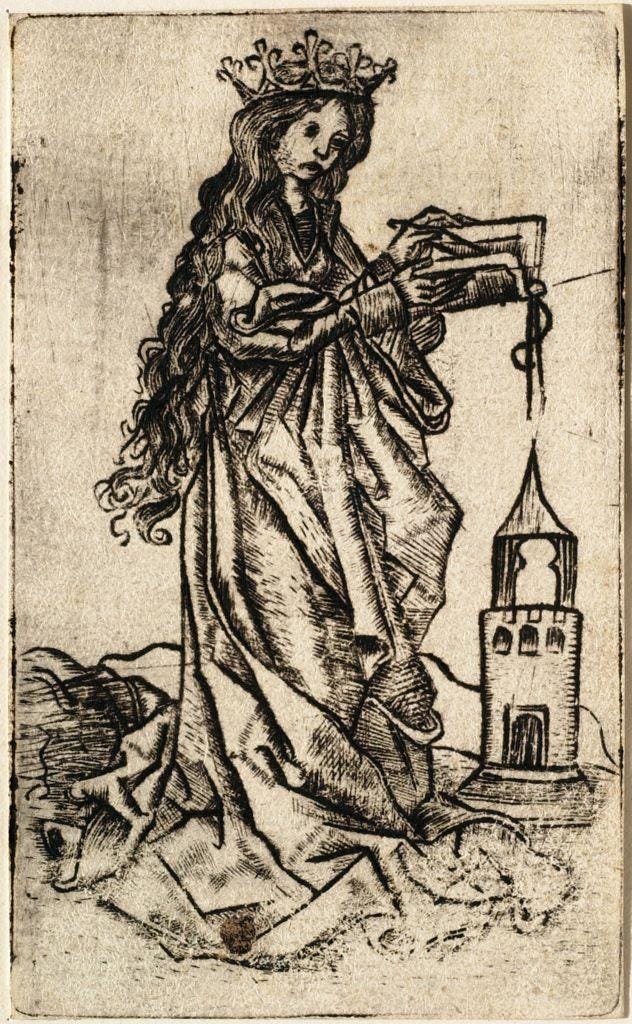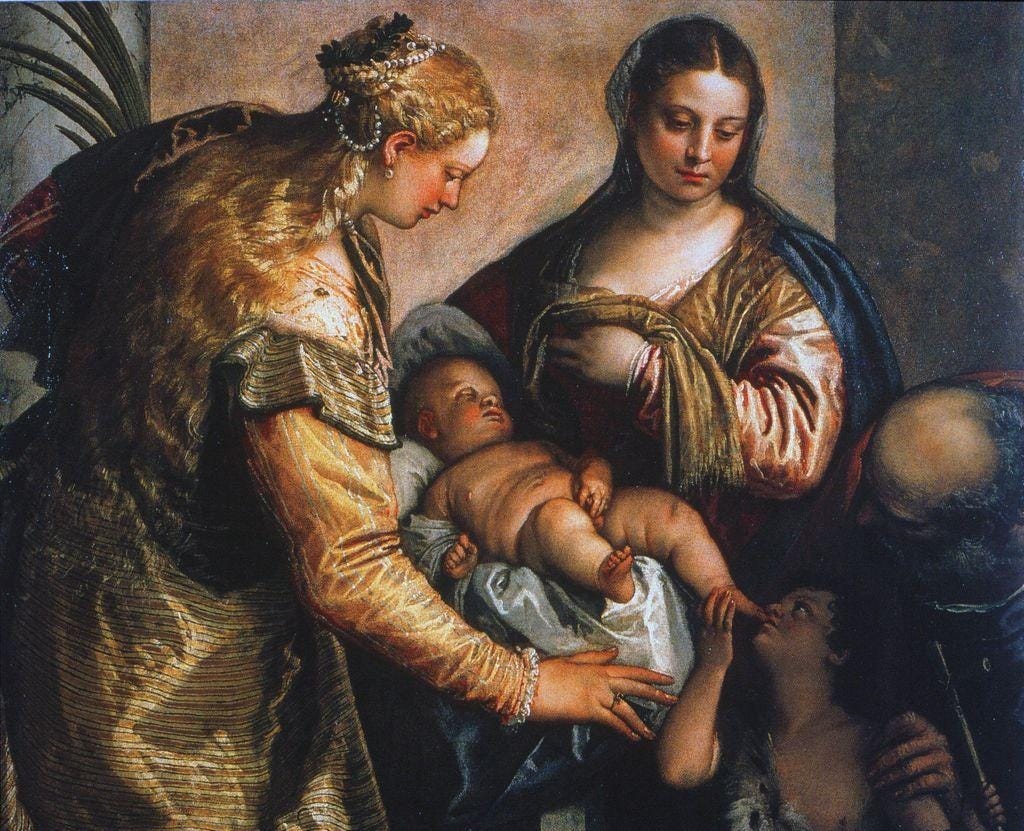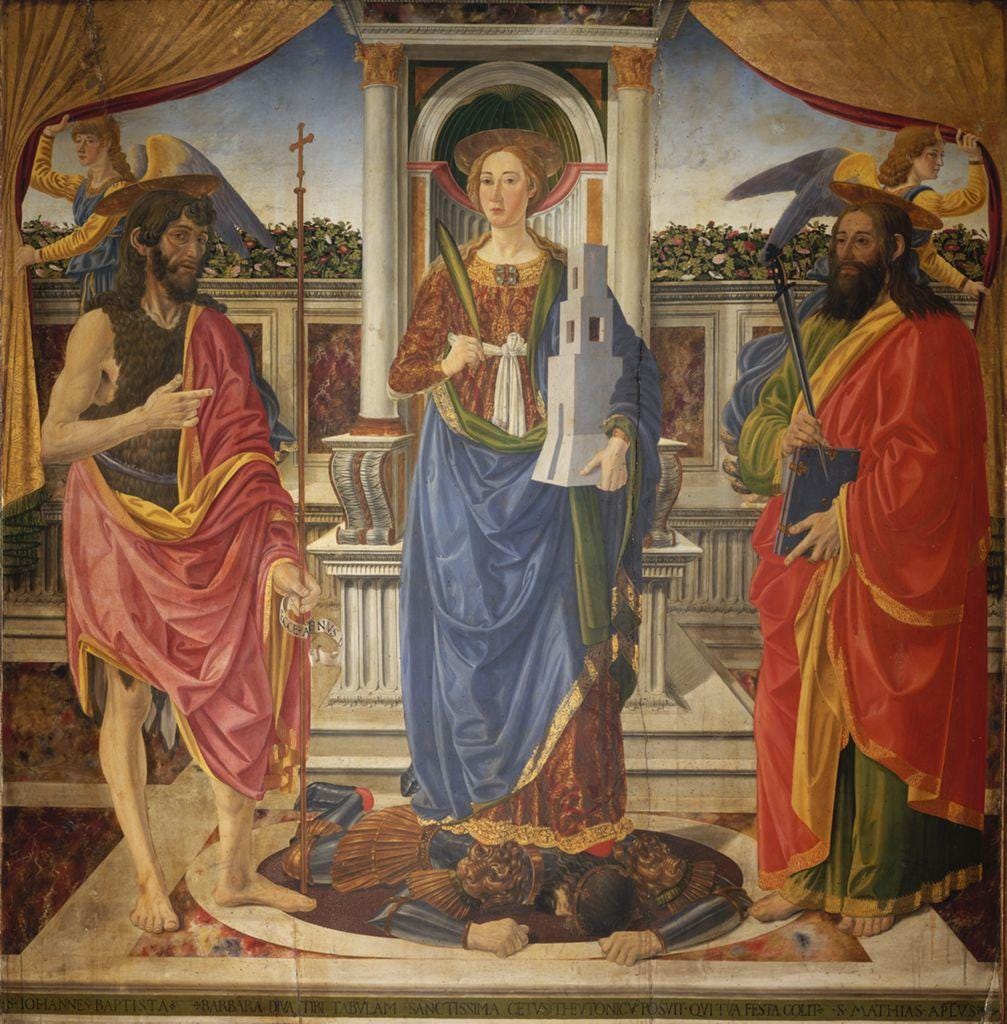Barbara and Maria: tortured women
Technically New York but we're talking about Venice and Constantinople
After starting school, I don’t intend to write much. But here’s a brief thing from a reading…
Saint Barbara lived in the 3rd century either in modern-day Turkey or Lebanon. She lived trapped in a tower by her father and was jealously guarded. Despite guarding her so, her father tried to force her to marry, which she rejected. When allowed a private bathhouse, she wanted her Christianity reflected in her architectural space and commissioned three windows rather than two to represent the Trinity.
After she professed her Christianity openly, she was tortured ruthlessly. Every night, light would fill her prison cell and her burns, cuts, bruises, the signs of her torture, were taken away. Torches that were to be used to burn her went out as soon as they came near her. Barbara was eventually killed by her father, who beheaded her.
Maria Argyropoulina, daughter of Argyropoulos of Constantinople, married Giovanni, son of Doge Pietro II Orseolo of Venice, in 1004. She brought with her a significant dowry, a palace in Constantinople, and the holy relics of St Barbara, which traveled with her to Venice.
Those two women took the boat together. They traveled across the Aegean Sea, through the Dardanelles Strait, the Sea of Marmara, and the Bosporus Strait before reaching the northern Adriatic Sea and the port of Venice together for about 2 weeks.1 They were accompanied by Maria’s unborn son, she was already some months pregnant when she got on the boat. Her parents were devastated to see her go “as if into exile in a foreign land.”
In 1006, an omen in the form of a comet was witnessed in Venice. Then, a famine and a plague which killed Maria, Giovanni, and their son within 16 days of one another. All that was left: the remains of the pre-dead Saint Barbara which went into an abbey on Torcello.
I rely heavily on most of this information from Donald M. Nicol’s Byzantium and Venice. I will not try to paraphrase this next bit.
Long after Maria's death a cautionary tale was told about the Greek wite of a Venetian Doge which seems to refer to her. It was related by St Peter Damian, a fervent reformer of the evils of his time, who died in 1072. The moral of it was that the good Christians of the west should beware of the decadent and sybaritic ways of the east, lest the Orontes flow into the Tiber. Peter records with vindictive satisfaction how the Greek princess who came to Venice died a hideous death as a result of her self-indulgence. Distrusting the water supply of Venice, she had her servants collect rain water for her ablutions. Too fastidious to eat with her fingers, she carried her food to her mouth with a two-pronged golden fork. Disliking the stink of the lagoons, she filled her rooms with incense and perfumes. For such depravity and vanity she was a victim of the wrath of God, who smote her with a vile disease. Her body putrefied, her limbs withered, her bedchamber was permeated by such a stench that only one of her maids could bear it; and after a lingering illness of excruciating agony she passed away, to the great relief of her friends.
My heart really sunk reading this. What a disgusting treatment of this poor woman. And the attempt to moralize her death into a teaching about the dangers of intermarrying?
What this invented story does is torture Maria. It burns her. It insists on her painful death and awful life. It is likely that the plague and the sickness of her son and husband and being so far from her home all tortured her too. The (perhaps invented, or embellished) Christian story of Saint Barbara heals her, insists on her perseverance and on the alleviation of her suffering. Maria’s does not tie up so nicely, and that gives me unrest.
Thank you for this helpful Quora answer







